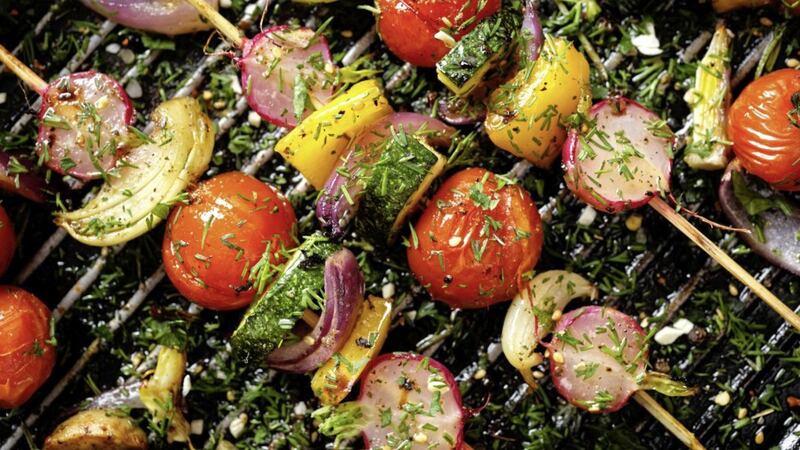EVERYONE knows all about five a day but it seems that not many of us are reaching the target. New research shows that almost one in five (19.5 per cent) of us here in Northern Ireland eat less than one portion of vegetables a day. That's lower than anywhere else in the UK.
:: What counts as a portion of vegetables?
Did you know that five a day means 400g of fruit and vegetables a day? So one portion is around 80g. Here's what officially counts as a portion:
:: Three heaped tablespoons of vegetables. Fresh or frozen are best.
:: One cereal bowlful of mixed salad
:: Three heaped tablespoons of beans and other pulse vegetables, such as kidney beans, lentils and chickpeas
Five a day means we need to eat five different types of fruit and vegetables, so five apples won't count for five a day, but one apple + one cup of broccoli + one side salad + one banana + one bowl of soup = five a day.
:: Why five a day?
Fruit and vegetables are an important part of a healthy, balanced diet, providing us with vitamins, minerals and fibre. Eating at least five portions of different types of fruit and vegetables a day has been shown to be important in helping to keep us healthy and reduce our risk of heart disease, stroke and some types of cancer.
The five a day campaign is based on recommendations from the World Health Organisation that 400g is the minimum we need for good health.
:: 10 ways to eat more vegetables
It is usually recommended that we eat more vegetables than fruit. Fruit is easy to grab and eat on the go but maybe we have to work a little harder to get the veggies up to our daily quota. Here are some ideas to help:
:: Whatever you are cooking, add more vegetables than you usually would. Not only will your dinner be healthier, but using extra vegetables helps your recipe go a little further, so it works out better value too. Add cauliflower and spinach to your usual curry recipe, stir in some extra peppers and onion to a chilli, or grate some carrot into your Bolognese.
:: There's so much more to frozen veg than peas and sweetcorn. There are vegetables for roasting, stir-frying, steaming, and frozen butternut squash or sweet potato are fantastic for soups (saving time and effort too!).
:: Think outside the box. Using vegetables in creative ways, like spiralised courgette mixed in with noodles, grated cauliflower added to rice or butternut squash strips as lasagne sheets all work well.
:: Replace pasta sauces with passata or tinned tomatoes. Try blending with some vegetables to really max up your intake.
:: It's barbecue season, so make up some vegetable kebabs, grill a few sweetcorn cobs and mix up a great big super salad to enjoy alongside your grilled fish and meat.
:: Chop up some raw veg and keep in the fridge for a helathy snack. Carrot sticks, pepper strips, sugar snap peas and cucumber sticks are perfect.
:: Try a mixture of roasted Mediterranean vegetables for dinner, and make enough to add to your lunchbox the next day. Roasted peppers, tomatoes, courgette, onion and garlic - lovely hot or cold and makes a great filling for wholemeal pittas with some leftover chicken, halloumi cheese or houmous.
:: Grow something. Salad leaves are a great way to start, as they grow quickly and taste so much better than the shop-bought version. All you need is a pot, some compost and a packet of seeds. Water every few days and you'll have fresh salad leaves in about three weeks.
:: Make it count. A big bowl of salad leaves will count as one portion, but if you swap it up to include a tomato and a big chunk of cucumber, you are up to three portions.
:: Try a different vegetable every week. If you always buy broccoli, then try cauliflower this week. The more variety you can include, the more nutrients you get.







